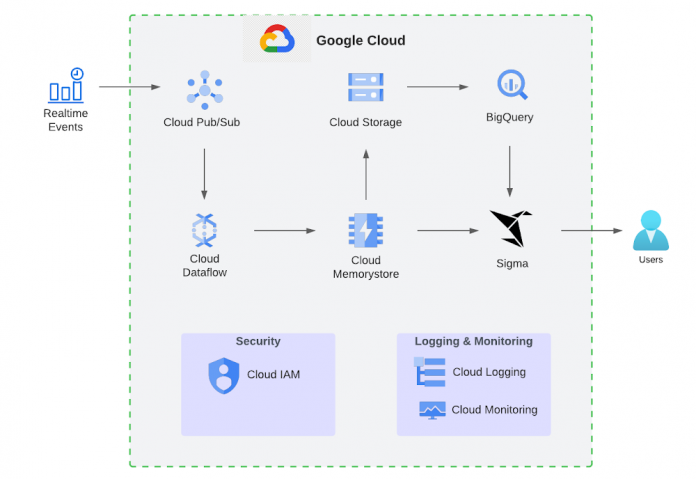In an ever-changing business landscape, the challenges of fraud detection, customer service enhancement, and supply chain optimization present themselves more frequently. With the necessity of real-time analysis growing evermore critical, solutions for these challenges deliver significant value.
For instance, the ability to identify fraudulent transactions as they transpire safeguards the financial health of your business while preserving data integrity. Next, by monitoring customer interactions and identifying potential issues, it’s possible to refine customer service processes, thereby reducing customer attrition. Lastly, vigilance in tracking the flow of goods within supply chains can aid in detecting potential disruptions. This will not only optimize your business’s supply chain operations but also guarantee that products are where they need to be at the right time.
Thus, implementing real-time analysis solutions offer enhanced protection, improved customer satisfaction, and optimized operations, catering to the vital demands of our rapidly evolving world.
In this blog post, we’re excited to showcase a real-time analytics pipeline that effectively utilizes Google Cloud services and Sigma Computing to serve these diverse scenarios.
Architecture
Sigma Computing, renowned for its cloud-native business intelligence and data analytics solutions, empowers business teams by making complex data modeling and sophisticated analysis accessible to everyone, without needing extensive coding skills. By converging Sigma Computing’s data democratization capabilities with Google Cloud’s robust, scalable, and secure infrastructure, we’re serving a wide array of use-case scenarios.
The collaboration of Sigma Computing and Google Cloud brings together the best of both worlds — Google Cloud’s advanced cloud computing infrastructure and Sigma’s simplified data analysis. Together, they enable businesses to make data-driven decisions swiftly, thus promoting efficiency, innovation, and growth.
Pub/Sub: Real-time signals or events are channeled into Pub/Sub, which efficiently processes real-time signals or events. Its value lies in its ability to integrate and manage distributed services and handle large message volumes. It ensures reliable message delivery, high scalability, and facilitates real-time analytics, event-driven computing, and IoT communications. These capabilities make it an asset in instantly gaining business insights, enhancing infrastructure responsiveness, and ensuring secure IoT communications.
Cloud Dataflow: This serverless, fully managed Google Cloud service is tailored for real-time streaming tasks, constructing a metrics processing pipeline from Pub/Sub. It’s invaluable for quick data processing and analytics, underpinning real-time decision-making. Its capabilities include auto-scaling to meet data volume changes and ensuring consistent, reliable performance. Typical use cases encompass live dashboards, anomaly detection, and real-time personalization.
Cloud Memorystore: Cloud Memorystore is used as the Metrics Database for its effective in-memory capabilities, supporting real-time scenarios. It offers built-in functions for diverse needs, delivering high performance and low-latency data access. Ideal for use cases like caching, session management, and gaming leaderboards, it enhances speed, scalability, and application responsiveness.
BigQuery and Cloud Storage: To further incorporate historical data into real-time analysis, you can transition data from Cloud Memorystore to BigQuery using the Cloud Memorystore for Redis API. This allows you to fully exploit BigQuery’s robust analytical capabilities and its scalable and efficient performance. Here’s the general workflow:
Create a Cloud Storage bucket to store the exported data.
Export the data from Cloud Memorystore in Redis RDB format.
Use the Cloud Memorystore for Redis API to copy the data from Cloud Memorystore to the Cloud Storage bucket.
Use the BigQuery Import tool to import the data from the Cloud Storage bucket into BigQuery.
Based on your specific needs, you might also consider streaming data directly from Pub/Sub to BigQuery via Dataflow, while also streaming data into Cloud Memorystore. Should you wish to explore this further, additional information is available in this referenced Google document.
Sigma: Sigma is a cloud-native analytics tool that presents users with real-time insights from large-scale data sets. Its interface resembles Google Sheets, making data analysis and visualization accessible to both code-free and code-friendly users. Despite its simplicity, Sigma can handle datasets as vast as Google BigQuery tables, turning them into interactive documents. It also provides direct, live access to data without extracting or moving it, ensuring strong data governance and security. Overall, Sigma combines the ease of spreadsheets with the power of big data analytics, creating a versatile tool for businesses. For further guidance on integrating Sigma with Google Cloud services, please visit Sigma’s documentation.
Cloud IAM, Cloud Logging, Cloud Monitoring: These services play a pivotal role in our design. Specifically,
Cloud IAM ensures secure and granular access control to your Google Cloud resources, enforcing the principle of least privilege and safeguarding your data and services.
Cloud Logging enables you to store, search, analyze, and alert on log data and events, aiding in troubleshooting and gaining insight into your applications’ operational health.
Lastly, Cloud Monitoring offers real-time visibility into the performance, uptime, and overall health of your applications, proactively notifying you of any issues so you can respond promptly, ensuring service reliability and optimal user experience.
Conclusion
In conclusion, our demonstrated real-time analytics pipeline offers a dynamic solution to modern-day business challenges, combining the power of Google Cloud services and Sigma Computing. This architecture not only responds rapidly to evolving situations but also integrates historical data, providing a comprehensive view of business operations. With Sigma, even users without coding skills can gain actionable insights from their data. We are confident that this solution will elevate your business decision-making processes, ensuring you stay ahead in this fast-paced world. Try this solution and experience firsthand how it can revolutionize your real-time analytics capabilities. Don’t miss out on this opportunity to upgrade your business intelligence and take your data-driven decision-making to the next level.
Acknowledgements: We sincerely express our gratitude towards David Porter and Reed Rawlings from Sigma Computing for their invaluable suggestions, recommendations, and review, and the Google Cloud and Sigma Computing team members who contributed to this collaboration.
Cloud BlogRead More


